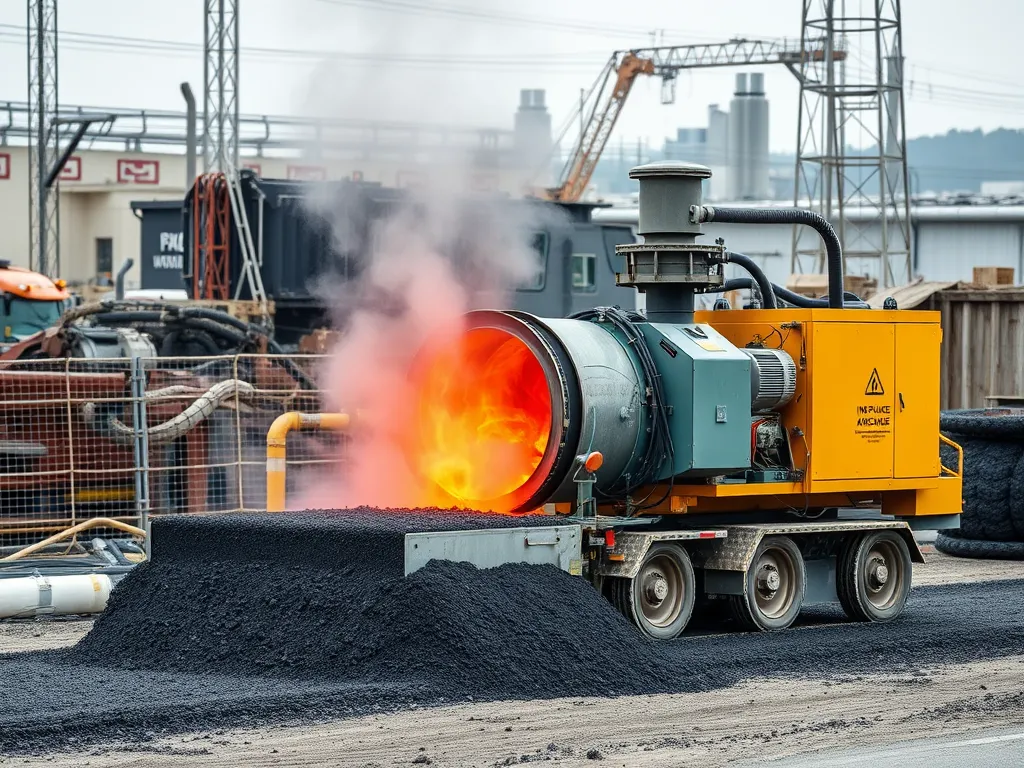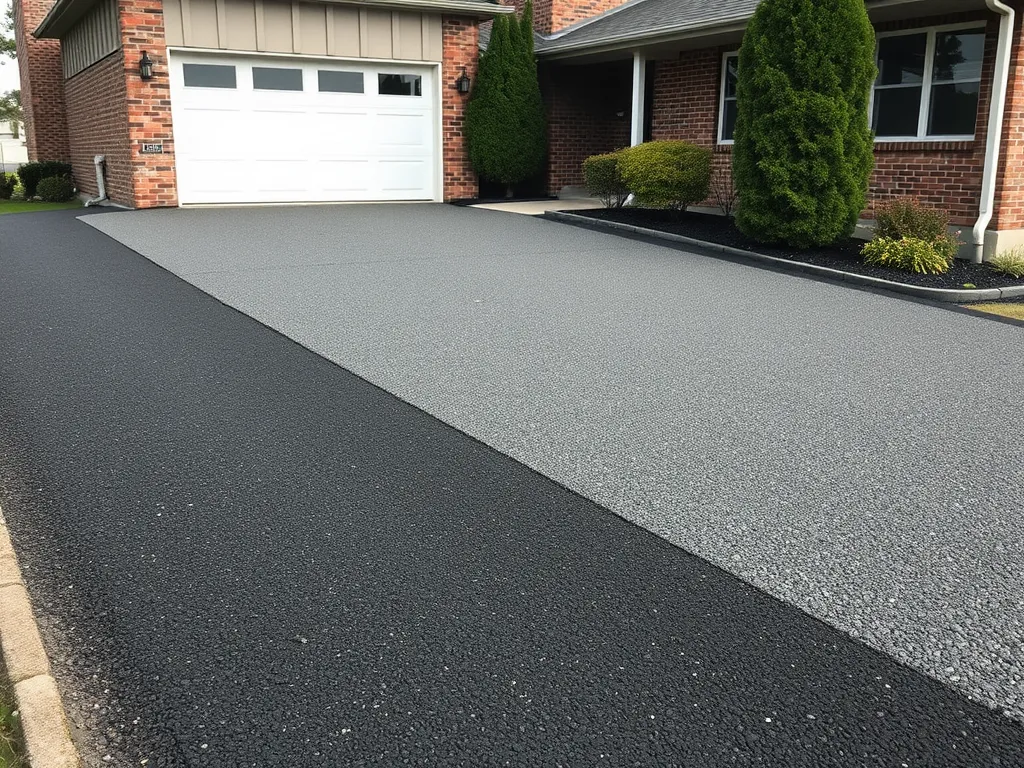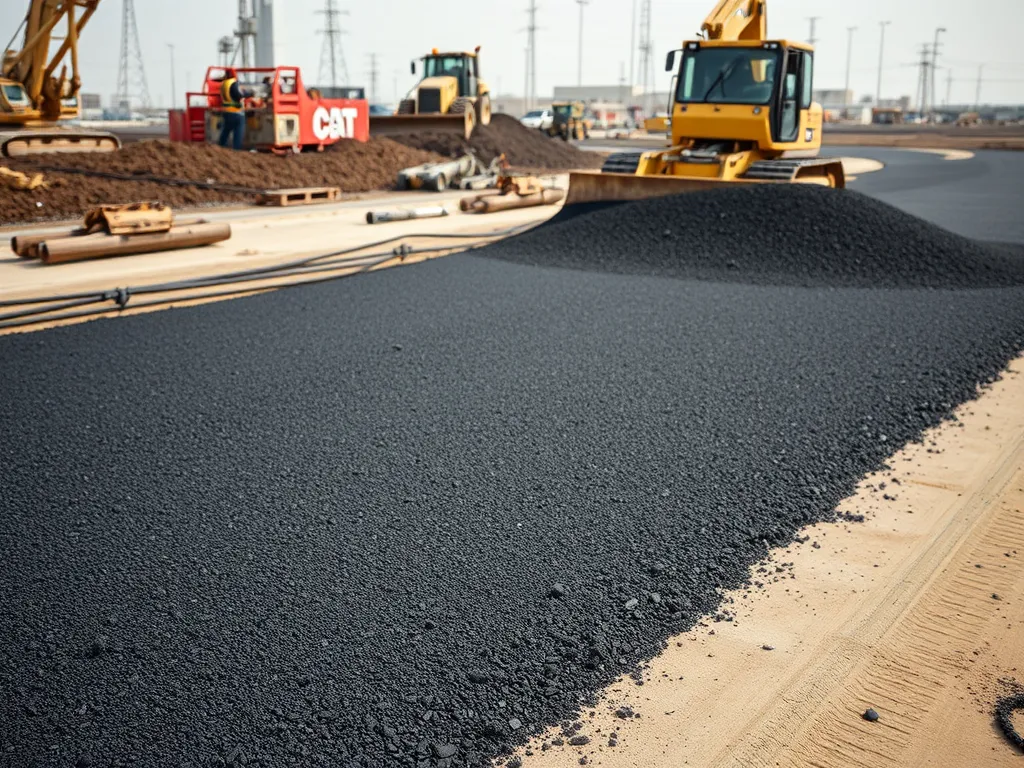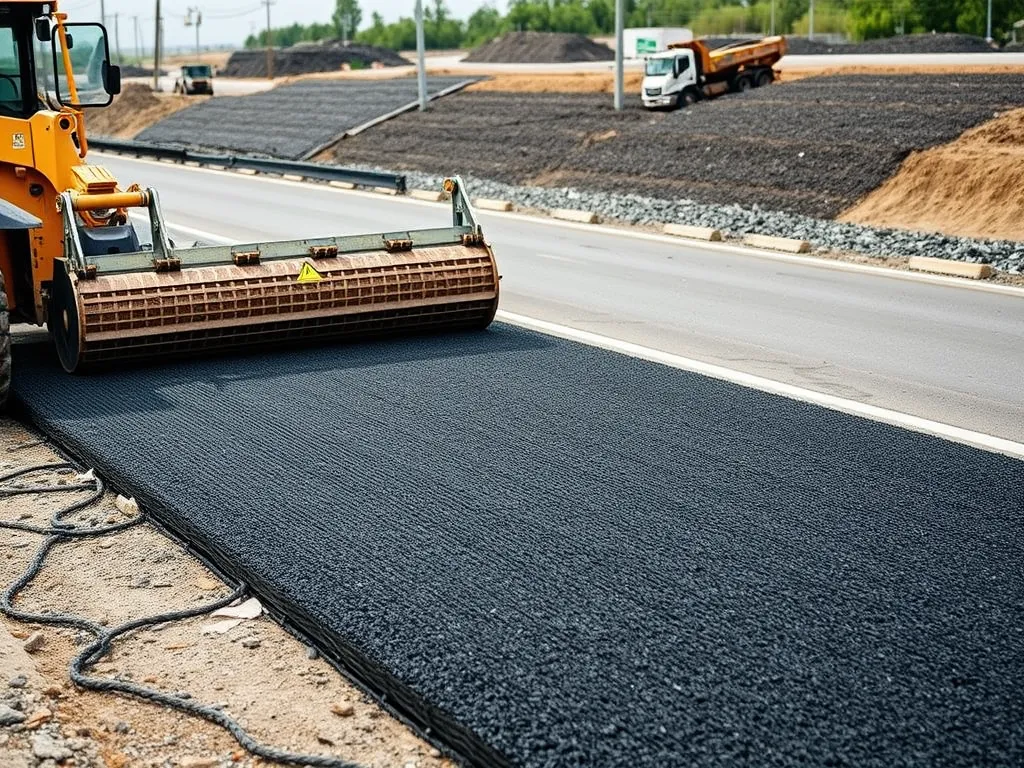Can You Reuse Asphalt?
Published on: October 6, 2025 | Last Updated: April 14, 2025
Written By: George Voss
Yes, asphalt can be reused multiple times through processes like hot in-place recycling and cold milling. Made of crushed stone (aggregates) and sticky bitumen binder, old asphalt gets recycled into Reclaimed Asphalt Pavement (RAP). Reheating reactivates the bitumen’s binding properties. Recycling cuts landfill waste by 95% compared to new asphalt production, lowers CO2 emissions by 20%, and saves up to 30% on material costs. Contractors reuse it for roads, driveways, and parking lots without sacrificing durability.
This article breaks down asphalt reuse methods, regional factors (like Texas heat), and step-by-step recycling. Learn how RAP performs in driveways, find local recyclers, compare costs, and get answers on remelting hardened asphalt. We cover environmental impacts, machine types, and lifespan data to help you make informed decisions.
Contents
- What is Asphalt?
- Reheating and Reusing Asphalt
- How Many Times Can Asphalt Be Reused?
- Using Reclaimed Asphalt for Driveways
- Regional Considerations for Asphalt Reuse
- The Asphalt Recycling Process
- Locating Asphalt Recycling Services
- Benefits Of Reusing Asphalt
- Durability Of Reused Asphalt
- Frequently Asked Questions (FAQs)
- Closing Thoughts
- Useful References for You:
What is Asphalt?
Pavement material consists of two primary components: crushed stone mixed with sand or gravel bonded together by bitumen. Bitumen acts as the sticky, black binder derived from crude oil. This combination forms rigid surfaces for roads, parking lots, or driveways. Its flexibility stems from the bitumen’s thermoplastic properties—softening under heat and hardening when cooled.
Reusability hinges on this structure. When broken into smaller pieces (called RAP—Reclaimed Asphalt Pavement), the bitumen remains intact. RAP typically contains 3-7% residual binder, allowing reprocessing without losing structural integrity. Modern mixes integrate polymer-modified binders like PG 64-22 to boost temperature resistance. Superpave specifications—performance-based mix designs—ensure recycled material meets climate-specific demands.
Recycling facilities mill old pavement into uniform particles, blending them with fresh binder for new projects. RAP usage rates now reach 40% in some mixes without compromising strength. This composition sets the stage for its second life through reheating and reprocessing.
Next: Explore how reheating transforms hardened pavement into reusable material.
Reheating and Reusing Asphalt
Reheating allows contractors to repurpose existing asphalt for new projects. This method works with both fresh scraps and aged pavement. The key lies in proper temperature control and material assessment.
Can You Reuse Hardened Asphalt?
Yes, hardened asphalt (called Reclaimed Asphalt Pavement/RAP) gets reused in 95% of US road projects. Crushed RAP mixes with virgin aggregates and PG binders (performance-graded asphalt cement) to create fresh pavement. Factors like asphalt age, aggregate quality, and binder integrity determine reuse potential. Pavement older than 20 years may need testing for contaminants like oil stains or chemical residues.
Can Asphalt Be Remelted?
Asphalt remelting requires temperatures between 300°F-350°F using specialized equipment like asphalt reclaimers. Hot in-place recycling (HIR) machines heat existing pavement to 2″ depth, restoring flexibility. For small repairs, contractors often add 2-5% rejuvenators – oils that reactivate aged binders. Remelted asphalt costs $18-$25 per ton versus $45-$60 for new material.
With proper techniques, reused asphalt performs like new pavement. Next, we’ll break down how many times this recycling loop can continue before material degradation occurs.

How Many Times Can Asphalt Be Reused?
Asphalt holds a near-endless reuse potential when properly recycled. High-quality reclaimed asphalt pavement (RAP) can be reused 6-8 times without losing structural integrity. The secret lies in its composition: aggregates retain strength through cycles, while bitumen binders regain plasticity when reheated. PG (Performance Graded) binders—asphalt’s weather-resistant glue—maintain flexibility even after multiple recycling passes.
Three factors determine reuse limits: aggregate condition, binder quality, and recycling methods. Crushed RAP with intact angular aggregates works best—rounded or dusty particles reduce durability. Binder rejuvenators add 20-30% more life by restoring aged bitumen’s viscosity. Hot in-place recycling preserves 95% of original materials, while cold milling typically allows 3-4 reuse cycles before aggregate degradation.
State DOTs prove asphalt’s longevity. Texas permits 35% RAP in surface mixes, while Wisconsin allows 50% for base layers. The National Asphalt Pavement Association reports 94% reuse rates for asphalt roads—far exceeding concrete’s 40% recyclability. With advanced plants hitting 99.9% material recovery, modern recycling stretches every ton further.
Next, let’s explore how these reused materials perform in residential projects.
Also See: Benefits and Uses Of Cold Mix Asphalt
Using Reclaimed Asphalt for Driveways
Old asphalt gets new life in driveways. Reclaimed asphalt pavement (RAP) mixes crushed old roads with fresh binder. This blend creates strong, budget-friendly surfaces. Homeowners save up to 30% compared to new asphalt.
Can You Reuse Asphalt for a Driveway?
Yes, reused asphalt works for driveways when done right. Crews mill old roads into gravel-size bits. These bits get heated to 300°F and mixed with 3-5% new binder. The hot mix is laid, rolled, and cooled for a smooth finish.
- Cost: $2-$5 per square foot vs $4-$8 for new
- Layers: 3-inch base layer + 1.5-inch top layer
- Set time: 24-48 hours before use
Cold mix asphalt works for small fixes. No heat needed – just pack the mix into holes or cracks. It holds up for 1-3 years until full repaving.
Proper drainage stops cracks. Slope the driveway 2% away from buildings. Seal coats every 2-3 years block water damage and UV rays. A well-kept recycled driveway lasts 15-20 years.
Reused asphalt performs best in dry, stable climates. Next, let’s explore how regional factors like heat or frost impact recycling plans.

Regional Considerations for Asphalt Reuse
Local climate, regulations, and material availability directly impact asphalt recycling success. Temperature extremes, precipitation patterns, and regional specifications dictate binder choices and pavement designs. Some states restrict recycled asphalt pavement (RAP) percentages, while others actively promote reclamation.
Can You Reuse Asphalt in Texas?
Texas routinely recycles asphalt due to favorable policies and high demand. The state’s extreme heat requires durable mixes with PG (performance-graded) binders like PG 76-22, engineered to resist rutting at 150°F+. TxDOT allows up to 40% RAP in surface layers—double the national average for many states.
Houston and Dallas operate municipal programs that collect millings for road projects. Contractors employ infrared heaters to soften existing pavement for in-place recycling, reducing hauling costs. Texas asphalt plants process 1.2 million tons of RAP annually, saving $18-$22 per ton versus virgin materials.
Key factors enabling asphalt reuse in Texas:
| Factor | Detail |
|---|---|
| Climate Adaptations | PG 70-22 and PG 76-22 binders dominate |
| RAP Limits | 40% for surface courses, 50% for base layers |
| Cost Savings | $15-$25/ton reduction with recycled material |
Local contractors stockpile millings for driveways and farm roads. Always verify regional specs—TxDOT requires RAP testing for gradation and asphalt content before approval.
Regional policies prove recycling viability varies by location. Next, let’s break down the step-by-step methods transforming old pavement into new surfaces.
The Asphalt Recycling Process
Asphalt recycling turns old roads into new ones. This process saves cash and cuts waste. Let’s break down how it works.
Step-by-step Recycling Methods
First, crews grind old roads with milling machines. These chew up asphalt into chunks called RAP (Reclaimed Asphalt Pavement). Trucks haul RAP to plants. There, it’s crushed, heated to 300°F, and mixed with fresh bitumen or aggregates. Plants test the blend for strength. The new mix gets laid like regular asphalt. Over 95% of RAP can be reused this way.
Can You Recycle Asphalt at Home?
Small jobs? Maybe. For driveways, crush old chunks with a sledge. Heat pieces in a kiln or drum until soft. Mix in 5-10% new bitumen. Spread while hot. But home tools lack plant-grade heat or pressure. Results may crack faster. For big jobs, pros handle it better.
Ready to find local help? Let’s explore where to recycle asphalt near you.

Locating Asphalt Recycling Services
Finding reliable asphalt recycling services requires knowing where to look. Over 90% of reclaimed asphalt pavement (RAP) gets reused in road projects annually. Local options exist for homeowners and contractors alike.
Asphalt Recycling Near Me
Search “asphalt recycling near me” to locate facilities within 50 miles. Most states have RAP processors listed on DOT websites. Online platforms like Earth911 or RecycleNation provide zip-code-based directories. Major national chains, such as Asphalt Specialties Co., operate recycling centers in 32 states. Call ahead to confirm accepted materials—some facilities take only clean, unmixed asphalt.
Free Asphalt Recycling Options
Certain contractors offer free pickup for large loads (typically 5+ tons). Municipal programs in cities like Austin and Denver collect asphalt during street maintenance. Check local waste management calendars for drop-off events. For smaller projects, landscape supply yards sometimes accept chunks for reuse as base material. Always verify purity standards—free services often reject asphalt mixed with concrete or debris.
Types Of Asphalt Recycling Machines
Cold planers grind old pavement into 0.5-2 inch RAP without heat. Asphalt recyclers blend RAP with fresh binder at 300°F. Portable crushers create graded aggregate for driveways. Large-scale plants use parallel drum mixers to combine 30% RAP with virgin materials. These systems cut production costs by $8-$15 per ton compared to new asphalt.
With recycling infrastructure widely available, the next step explores how reused asphalt performs against traditional materials.
Benefits Of Reusing Asphalt
Recycling asphalt offers both ecological benefits and budget perks. This practice turns old pavement into fresh surfacing without compromising quality.
Environmental Advantages Of Asphalt Recycling
Reclaimed Asphalt Pavement (RAP) reduces mining of virgin materials like limestone or sand. Every ton recycled cuts 0.03 tons of CO₂ emissions. Production using RAP requires 21% less energy than new mixes. It also diverts 90 million tons of waste from landfills yearly in the United States.
Reusing existing binders like PG 64-22 or PG 76-16 lowers reliance on petroleum-based bitumen. This slows resource depletion while meeting Superpave specifications for road performance. Less trucking of raw materials further reduces carbon footprints by up to 15% per project.
Cost Savings With Recycled Asphalt
Using RAP slashes material costs by 30-50% versus new asphalt. Production runs between $30-$80 per ton for recycled versus $50-$120 for virgin mixes. Contractors save up to $2.50 per square foot on driveways by choosing reclaimed stockpiles.
| New Asphalt | Recycled Asphalt |
|---|---|
| $50-$120/ton | $30-$80/ton |
| 15-20% binder content | 5-7% added binder |
Local recycling cuts trucking distances, saving $1.25-$3.00 per ton-mile. Municipal projects report 22% lower bids when contractors utilize RAP. Homeowners redoing driveways spend $1,200-$4,500 less with reused materials.
Beyond these benefits, the performance of reused pavement depends on proper installation methods. Let’s explore how long recycled surfaces hold up under traffic.

Durability Of Reused Asphalt
Reused asphalt performs as well as new material when processed correctly. Modern recycling techniques reactivate the bitumen binder while maintaining aggregate structure. PG (Performance Grade) binders and Superpave mix designs ensure recycled pavements meet strict DOT specifications. Properly installed recycled asphalt lasts 20-30 years with routine maintenance.
How Long Does Reused Asphalt Last?
Three factors determine lifespan:
- Traffic load: High-volume roads need more frequent maintenance than driveways
- Climate: Thermal cycling impacts material expansion/contraction rates
- Installation quality: 95% compaction density required for optimal performance
A 2023 NCAT study showed recycled asphalt maintains 92% of virgin material’s load-bearing capacity over 15 years. Most states allow 25% RAP (Reclaimed Asphalt Pavement) in surface mixes, with Texas permitting 40% for certain applications. Sealcoating every 3-5 years extends service life by blocking oxidation.
Let’s examine common questions about recycling methods and equipment in the next section.
Frequently Asked Questions (FAQs)
Can You Reheat and Reuse Asphalt?
Yes, asphalt can be reheated and reused through processes such as hot in-place recycling or using rejuvenators. This method allows the bitumen to regain its binding properties, making it viable for new pavement projects.
Is Asphalt Recyclable or Reclaimable?
Yes, asphalt is both recyclable and reclaimable. Reclaimed Asphalt Pavement (RAP) is widely used in new road construction, as it can be processed and mixed with fresh materials without losing structural integrity.
Closing Thoughts
Reusing asphalt offers numerous advantages, from reducing waste to cutting project costs. The potential to repave roads, fix driveways, and contribute to environmental sustainability makes asphalt recycling a valuable practice. Understanding the methods of reheating and reclaiming asphalt helps both contractors and homeowners make informed decisions.
With asphalt capable of being reused multiple times, homeowners can benefit from its durability while enjoying significant savings. Remember, regional considerations can affect the feasibility of asphalt reuse, so always check local guidelines.
For more information on asphalt recycling and its benefits, visit Asphalt Calculator USA.
Useful References for You:
- Yoder, E. J., & Witczak, M. W. (1975). Principles of Pavement Design (2nd ed.). New York, NY: Wiley.
- r/asphalt on Reddit: Pros and Cons of Recycled Asphalt
- Asphalt Recycling FAQ | Asphalt Contractor in Greater Grand Rapids, MI
- Reclaiming, Reusing, and Recycling Asphalt Pavement
- A Complete Guide to Asphalt Millings for Driveways & Paving


